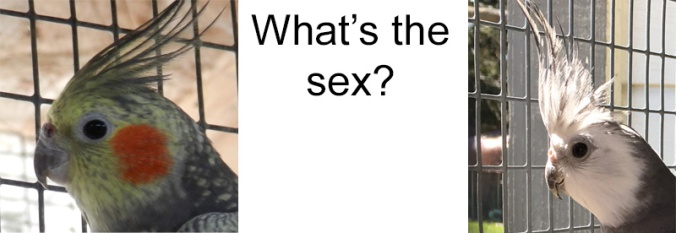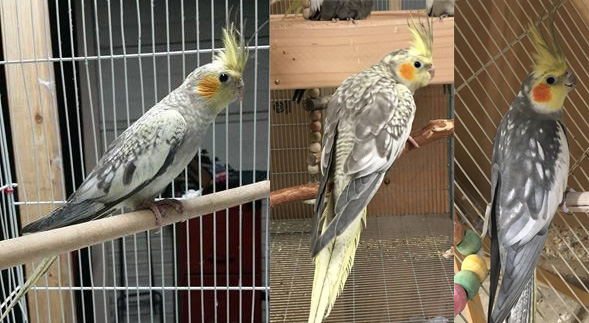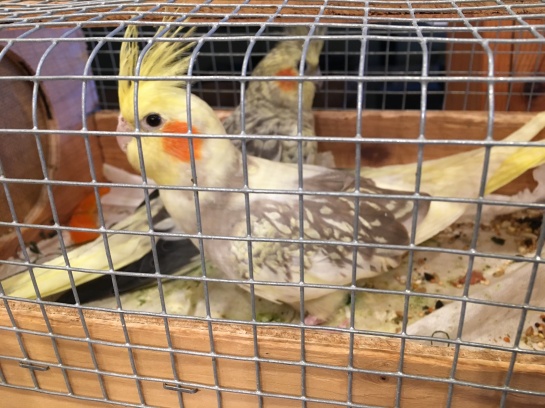Cockatiels are dimorphic, which means males and females look different. They’re pretty easy to sex IF you know what to look for. Unfortunately, there’s a plethora of misinformation online. When it comes to sexing cockatiels, mutations matter, and most people simply don’t have the expertise to do it accurately. This is because certain rules of sexing are conditional, and if you don’t know the conditions under which the rule applies, you’re going to be wrong.
Let me give you an example. Pretend you’re an alien studying life on Earth, and one of your fellow aliens tells you that humans are easy to sex. All you have to do is follow two simple rules: Males are tall and have short hair. Females are short and have long hair.
The problem with this blanket statement should be obvious, but in case it’s not:

Likewise, there are a lot of incorrect generalities when it comes to sexing cockatiels. This has led to a lot of well-intentioned people repeating things they’ve heard without any concept of why they’re applying the information incorrectly:



Cheek Patch Intensity/Color
Cheek patch color/intensity is one I see commonly, so we’ll tackle that first. Cockatiels have been bred in captivity for a long time, and while this rule might apply to wild cockatiels, it’s useless for sexing pets, which are likely to carry a number of color mutations and are very far removed from their wild counterparts.
All the examples I give here are adult birds. Scroll slowly if you’d like to test yourself.

I’d like to point that while both birds are normal, each carries the gene for pied. Again, captive birds are not wild-type!
Above we have two normal colored birds. Male on the left, female on the right. The rule seems to apply, right?
 Okay now what about these two? The bird on the left has a very nice orange patch, just like the male above. The bird on the right doesn’t even have a cheek patch.
Okay now what about these two? The bird on the left has a very nice orange patch, just like the male above. The bird on the right doesn’t even have a cheek patch.
The problem here is that these birds have obvious mutations. The right is a pearl; left is whiteface. Whiteface birds can’t produce any yellow/orange color, so they don’t have a cheek patch. To someone inexperienced, it might even look like the bird on the left has a facial mask. There’s yellow there, right? Nope.

This is why knowing the mutation matters. Females keep their pearls into adulthood. Males don’t (unless they’re pied–another rule broken!).

Progression of a pearl male. Baby, 6 months, a year. You can see how he gains a facial mask and loses many of the pearl markings. He will continue to lose more.
 Okay now what about these two? The bird on the left has a much brighter cheek patch than the bird on the right.
Okay now what about these two? The bird on the left has a much brighter cheek patch than the bird on the right.
I hate to break it to you, but that nice orange patch belongs to a lutino pearl hen. The male on the right has the yellow cheek mutation. There are several mutations that alter the cheek patch color like this. Pastelface is another one.
 “No problem,” someone says. “I can just look for the facial mask!”
“No problem,” someone says. “I can just look for the facial mask!”
Facial Mask
Go ahead and try sexing the birds below.
 On the left we’re missing the distinct facial mask and the cheek patch is dull. The bird on the right is lutino, so it’s difficult to see if there’s a mask there, but the cheek patch is bright. Which one is male and which one is female?
On the left we’re missing the distinct facial mask and the cheek patch is dull. The bird on the right is lutino, so it’s difficult to see if there’s a mask there, but the cheek patch is bright. Which one is male and which one is female?

Lutinos are really difficult to sex visually, because a lot of their identifying characteristics, like the mask and tail barring, are hard to see. It’s even more difficult if they’re pied lutino, which you may not even know from looking at them.
I cannot tell you how often I see people claim that a pied bird must be male because it has yellow/white on its head. Mutations matter!
Petrie, the male on the left, is what’s called a dirty-faced pied–he has melanin on his face. Pied males do not get a facial mask, and pied females can have yellow heads. They cannot be sexed visually. Pearl pied males may lose their pearls, but they can also keep them. Pieds should really be sexed by behavior or DNA. Just to give you an idea:

Pearl Pied Female

Pearl Pied Male
So, how do you sex your cockatiel?
There are a few methods. If you’re impatient and want to know now, or if you have a pied or lutino, I recommend DNA sexing. It’s important to note that lutino is a sex-linked gene, and it is statistically far more likely to be female.
The other method is to wait until the bird is at least nine months old and has gone through a molt. Males will have begun to show their standard characteristics by then (except for pieds!). At this point you can use my guide to sexing or ask an expert. If you post in a general Facebook forum, you’re going to get a lot of inexperienced people giving you their incorrect opinions about head/cheek color, which is why I’m recommending a professional forum.
For more about how sex-linked genes work, see my article on Genetics.
© 2019 by Karen Trinkaus. May not be reprinted or used in any way without the author’s permission.